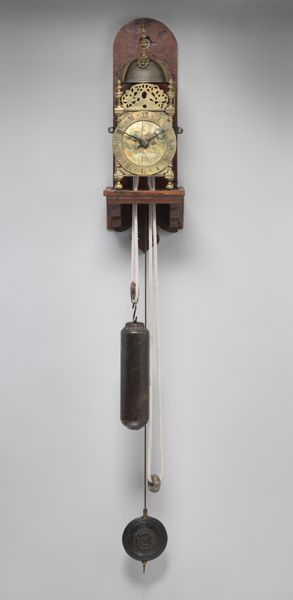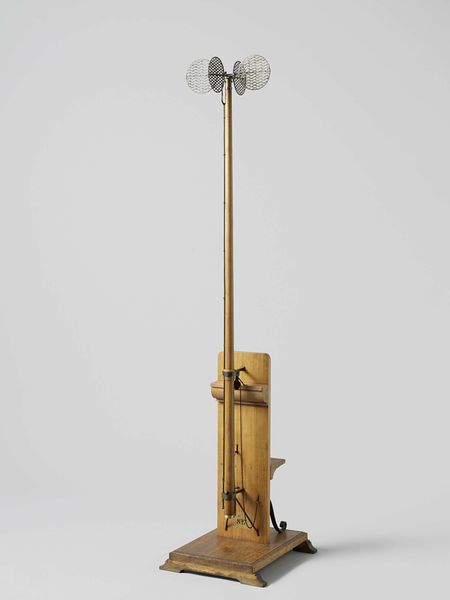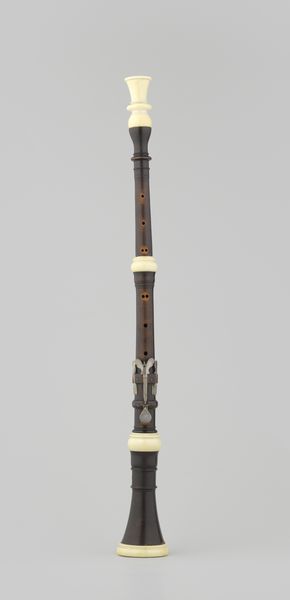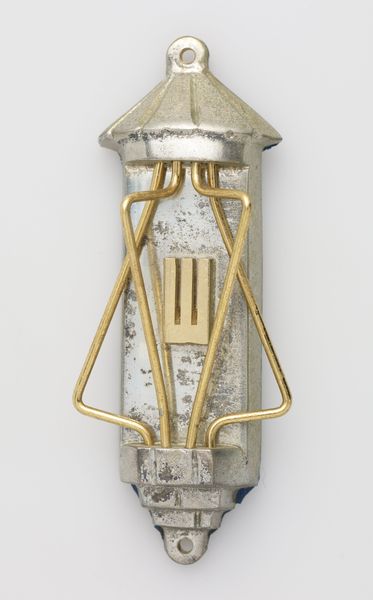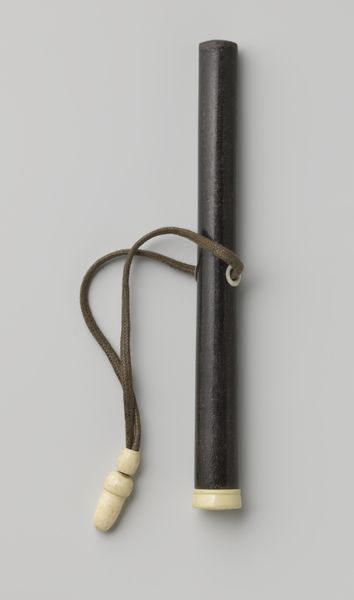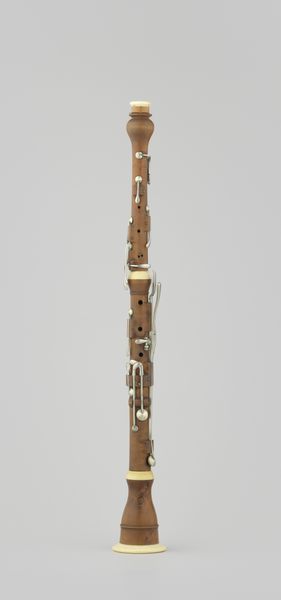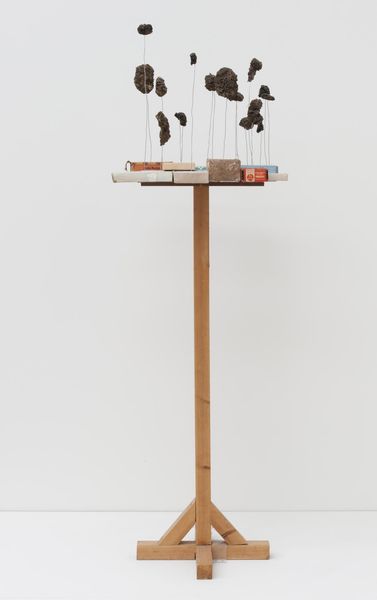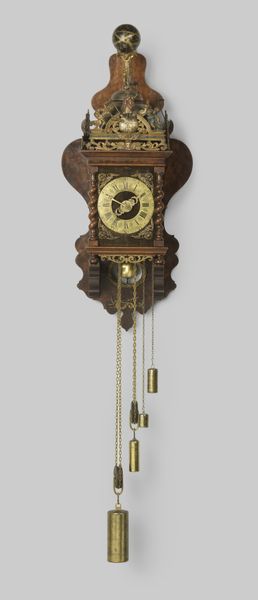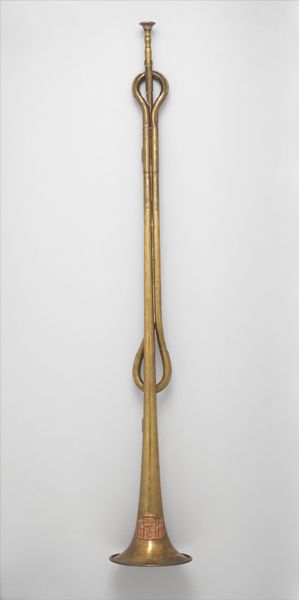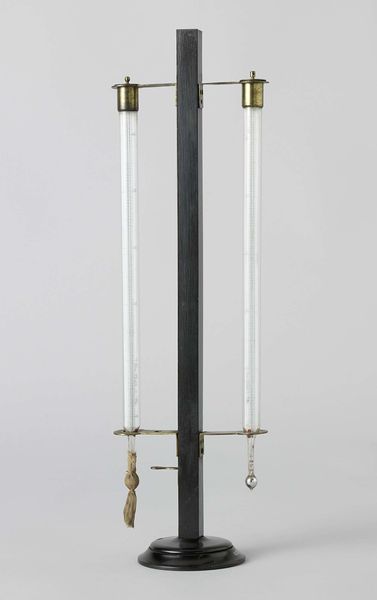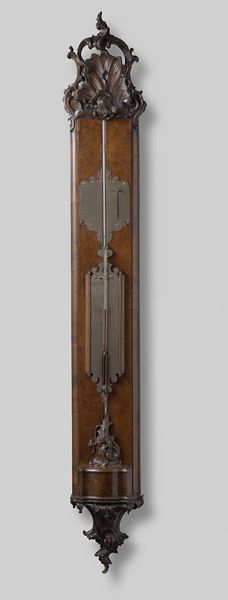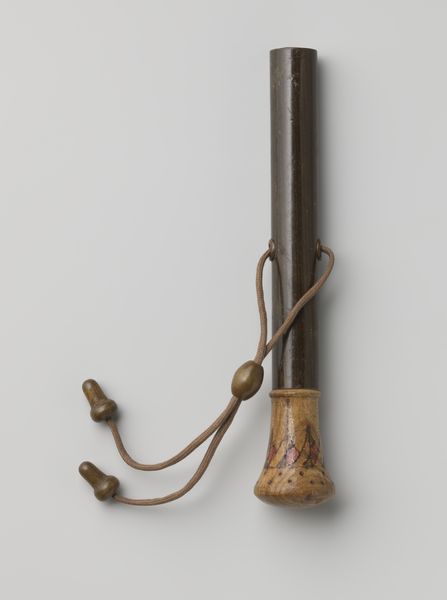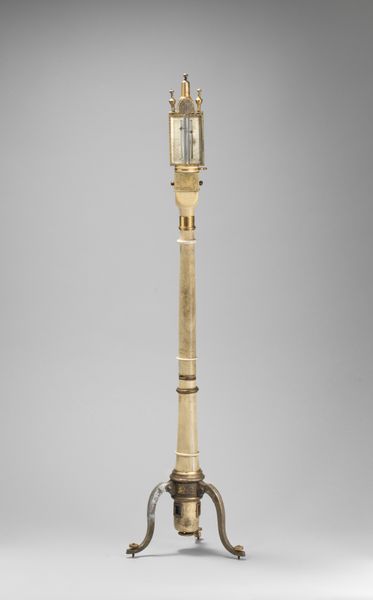
Wandklok, met een zich aan de bovenzijde verjongend, door een timpaan gedekt blad c. 1690
0:00
0:00
carving, metal, wood
#
carving
#
baroque
#
metal
#
wood
#
decorative-art
Dimensions: height 76.0 cm, width 34.0 cm, depth 23.0 cm
Copyright: Rijks Museum: Open Domain
This wall clock, made by Jan Copies, is an intriguing object because it blends the precision of timekeeping with the cultural values of its time. The clock’s design, with its classical columns and a triangular pediment or ‘timpaan’, borrows from ancient Greek architecture. This wasn’t just about aesthetics; it reflected a broader cultural movement, especially popular in the Netherlands at the time, of associating everyday objects with the grandeur and stability of classical antiquity. But why? The answer may lie in the socio-political context. Perhaps it's a way of trying to give visual form to cultural aspirations, or to legitimize them? The pendulum clock was first invented in the mid-17th Century. Looking into the history of timekeeping might help us to understand the cultural significance of this particular design.
Comments
No comments
Be the first to comment and join the conversation on the ultimate creative platform.

